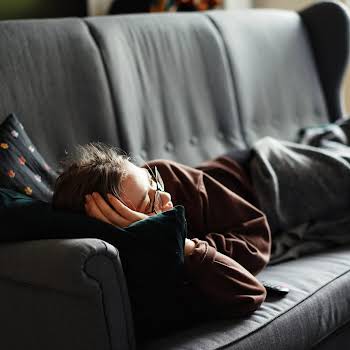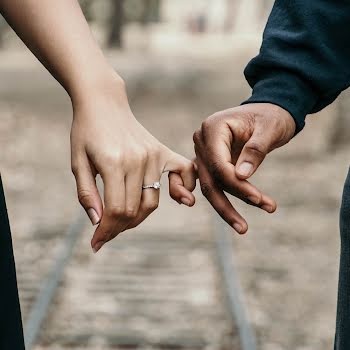
By Jennifer McShane
12th Oct 2020
12th Oct 2020
It doesn’t take a meteorologist to confirm that weather affects mood, and as we come into a new season, with less light and longer nights, it can have an effect on our moods – and that’s before we even bring Covid into the mix. But there’s a big difference between wanting to hibernate for a few weeks (and God knows, we’ve been doing that a lot this year) and feeling like you don’t want to physically leave your bed. It’s sometimes difficult to determine whether a bout of sadness is indeed an indication of SAD, so a doctor’s visit is the first step on the road to treatment. Afterwards, there are a few things you can do, proven to help alleviate your symptoms.
Seasonal Affective Disorder, otherwise known as SAD, is a form of seasonal depression that typically occurs going into the winter months with symptoms weaning off during the spring and summer. According to research, symptoms of SAD include decreased concentration, increased appetite, weight gain, social withdrawal, moodiness, and fatigue.
Though people sometimes write it off as simple moodiness, SAD, different from a bout of mere ‘winter blues,’ is a real form of cyclical depression that is highly dependent on a person’s hormonal state, seasonal characteristics like ambient temperature, and exposure to natural light. And though SAD affects both sexes, women are reportedly twice as likely to experience symptoms.
There’s a range of treatments proven to help to help treat the symptoms of SAD and we’ve listed six of them below. Please remember to consult a medical professional that can advise you on the treatment that will work best as a whole, but in the meantime, these natural methods should help the process.
Light Therapy

Many psychology professionals recommended that folks who experience the winter blues get a SAD lamp: a lamp that’s been specifically designed to help with SAD. But if you don’t want to spend funds on a lamp, sitting three feet away from a 300 watt light bulb for twenty minutes is supposed to provide a similar boost of warm, natural-feeling light and better still, getting outdoors and taking in the natural elements is also a great idea (even while socially-distanced).
Animal Therapy
There have been numerous studies that prove that spending time with your furry friend lifts your mood, and why wouldn’t it? Here is an animal that can shower you with unconditional love and attention, so surely this is one of the best ways to feel happier. Take an extra half an hour every day to spend time with your pooch and let the good feelings flow.
Exercise more

We know it’s freezing and the last thing you want to do is leave your cosy house, but exercising boosts the feel-good chemicals endorphins which give you a natural lift. The correlation between physical activity and mood is a fairly strong one, so even if you’re not feeling outdoorsy, indoor activity works too.
Get regular sleep
It’s tempting to indulge in many hours of extra shuteye during the cold winter months, but research indicates that this isn’t the route to go down if you’re looking to regulate your mood. Maintaining regular and consistent sleeping habits is the way to do this. Constant, sudden napping (while good every once in a while) can often lead to flares of depression so it’s important to keep your pattern nice and regular and it’s about getting the right amount of sleep; too much or too little can play havoc with your body clock as well as your mood.
Change up your diet

Getting more Omega-3 fatty acids and folic acids into your diet is a natural way that can help to ease depression, according to Ian Cook, MD, psychiatrist and director of the Depression Research and Clinic Program at UCLA. Though it might not seem like the time of year to stock up on fish dishes, it is fairly crucial that those of us prone to low mood keep oily fish in our diets the whole year-round.
The high levels of omega-3 fatty acids (one of the “good” fats) in fish are said to be particularly good for mood-boosting. Mackerel, sardines and salmon (popular at this festive time of year, too) are good sources of fatty acid, and getting it is especially important because the human body can’t produce omega-3s on its own. Try out a few winter warmer recipes and try to eat fish once or twice a week.
6. Art Therapy

Art therapy has been proven to help with a number of conditions, including depression. Particularly popular in the US, there’s an official association for regulating art therapy in the United States: The American Art Therapy Association. Tests have proven that creative expression releases dopamine, a chemical associated with the brain’s pleasure or reward centre.
So dancing, painting, or playing an instrument stimulates the very chemicals which boost a person’s feeling of wellbeing, reduces anxiety and effectively works to combat a low mood. If you’re looking for a starting point, adult colouring books are on the rise and are a fantastic outlet for you to focus your creative energies.
Main photograph via Pexels
Read more: Planning an autumn staycation? 12 ways to manage a migraine while travelling
Read more: ‘I didn’t think I’d ever be able to work again – burnout can destroy your life’























